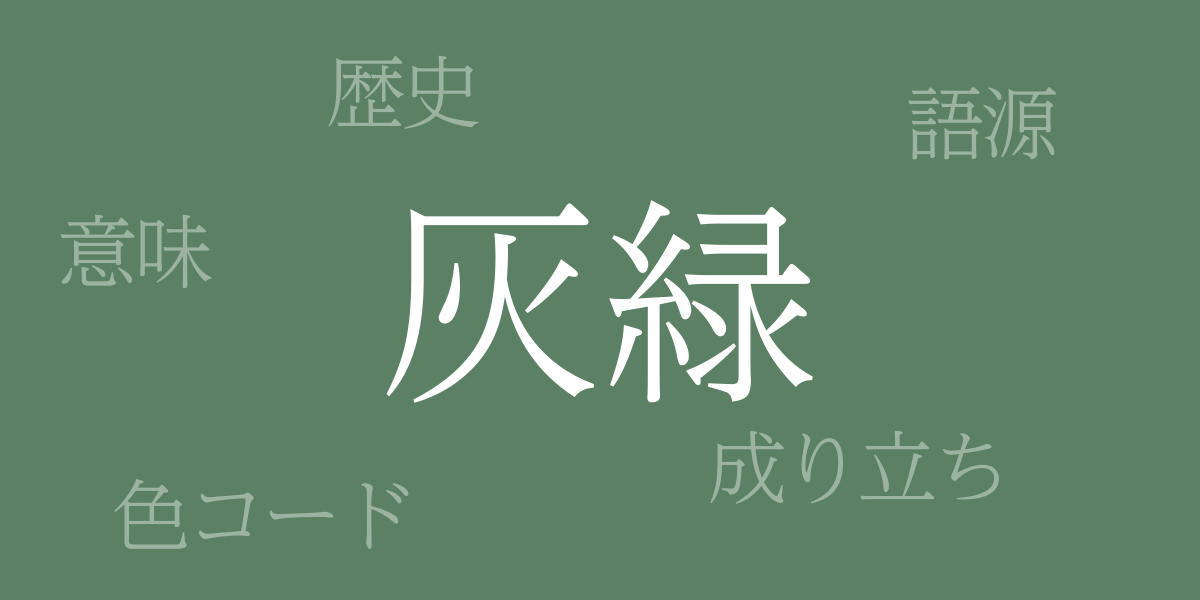Amidst the calm colors of nature, a single lotus leaf floats quietly, reminiscent of Japan’s traditional color, ‘Grayish Green (灰緑, はいみどり)’. This shade reflects the Japanese sensibility and is deeply rooted in Japan’s culture through its long history. This article delves deeply into the allure of Grayish Green, exploring its origins, how it has been used in modern times, and its broader significance.
About Grayish Green (灰緑)
Grayish Green (灰緑), true to its name, is a shade where green is tinged with gray, evoking a sense of calm and traditional Japanese aesthetics. This color, with its serene yet nostalgic ambiance, is commonly found in Japan’s nature and traditional crafts. Influencing Japanese aesthetics significantly, Grayish Green continues to be cherished in fashion, architecture, and art.
The History of Grayish Green
The use of Grayish Green dates back to the Nara period and was already popular in Japanese attire. During the Heian period, it became a prized color among nobility, enhancing their color sensibility and regarded for its elegance. Over time, by the Edo period, it was embraced by samurai and commoners alike, becoming a symbol of Japan’s color culture.
Color Codes for Grayish Green
In digital design and web production, accurate color representation is crucial. Below are the color codes for Grayish Green:
- HEX: #5B8063
- RGB: R:91 G:128 B:99
- CMYK: C:28.9 M:0.0 Y:22.7 K:49.8
Western Name for Grayish Green
In the West, Grayish Green corresponds to ‘Sage Green.’ Named after the color of sage herb leaves, it is favored in Western interiors and fashion for its subdued tone and is internationally recognized.
Summary on Grayish Green
As a traditional Japanese color, Grayish Green has blended into the lives of the Japanese people and shaped their aesthetic sensibilities over the centuries. Today, its serene hue is employed across various design fields and is revalued globally. In the digital era, Grayish Green is widely used by creators worldwide, ensuring its legacy continues into the future.

























